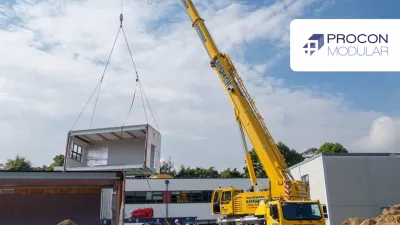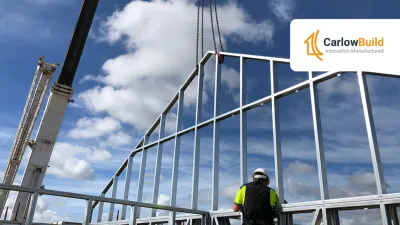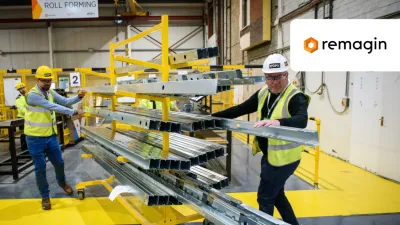Print the Future: The Rise of 3D Printing for Construction in Ireland
3D printing is one the areas of Modern Methods of Construction (MMC) with the greatest potential. How has 3D printing developed from a technical pipedream to a sophisticated building technology with an increasingly skilled workforce?

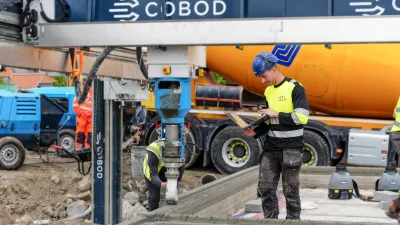
3D printing is a more recent innovation in MMC, but it could have the biggest impact on increasing Ireland’s housing supply. 3D printing has many uses in construction. This spans prototyping; additive welding and printing structural components; and even the layering of concrete to form a finished superstructure. As such, 3D printing crosses multiple categories in the MMC Definition Framework, especially Category 2 and 4.
The benefits of 3D printing for construction? Companies can create sub-assemblies or whole structures much faster. It also uses fewer resources and generates less waste, with printers programmed to only use the exact amount of raw material needed. Lastly, 3D printers require less labour to operate than traditional building processes demand.
3D printing is already used globally in the construction sector. ICON Technologies in the US and COBOD International A/S, Europe's premier 3D construction printer supplier, are multi-million Euro companies attracting major investment to develop residential properties and public infrastructure with a greater emphasis on efficiency and sustainability.
Now, 3D printing has finally arrived in the mainstream in Ireland with Grange Close in Dundalk, Co. Louth, becoming the first residential scheme built using printed concrete, and the structural walls were finished in only 18 days. From months of work down to days, and from teams of skilled workers required onsite to just four people for quality checks and finishing.
Grange Close brought together building materials supplier Roadstone Ltd. and Harcourt Technologies Ltd (HTL.tech). HTL.tech has two decades’ experience in traditional 3D additive manufacturing. In recent years HTL.tech has partnered with COBOD as its Irish technology distributor, bringing sophisticated 3D printers into the national market.
For the build, Roadstone created a Ready-mix Concrete solution (compliant with Concrete Standard EN206) after testing for flow, strength, and durability. HTL.tech trialled the material by printing test houses at its R&D facility in Drogheda, Co. Louth, to ensure viability and adherence to Irish building regulations.

Justin Kinsella, Managing Director of HTL.tech, said the testing and roll-out of the Grange Close development proves 3D concrete printing has a key role in negating the challenges facing the Irish building sector. These include a shortage of skilled labour, escalating costs encountered by residential and commercial construction firms, and a decline in the quality of construction observed in recent years.
We need technology that can do more with fewer resources, and this technology increases housing output with the same resources.
Managing Director of HTL.tech
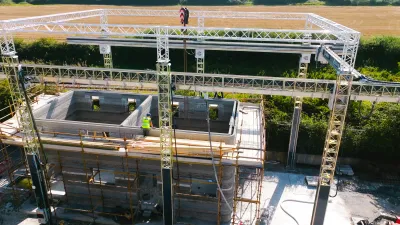
So, if 3D concrete printing has a central role to play in the future of construction, what is being done to transform how houses are built and upskill construction professionals in Ireland? As Mary Glennon, Director of Training and Education at HTL.tech, put it:
Our goal isn't to eliminate brick layers but to enhance their skills and support the extension of their careers, which often require significant physical effort. Their industry expertise plays a crucial role in this process, enabling us to better facilitate their development and respond to evolving industry needs.
Director of Training and Education at HTL.tech
The Louth Meath Education and Training Board recently acquired the use of a COBOD BOD2 3D concrete printer for its Advanced Manufacturing Training Centre of Excellence (AMTCE). Established in 2021, the AMTCE addresses the emerging training needs of advanced manufacturing and its application to building the national housing stock.
The AMTCE offers a course in the Essentials of 3D Construction Printing at HTL.tech's company's R&D facility. To date, 100+ construction professionals have completed the programme. It also offers courses in Introduction to Additive Manufacturing, 3D Printing with Polymers and Concrete, and Digital Design and CAD for Additive Processes.
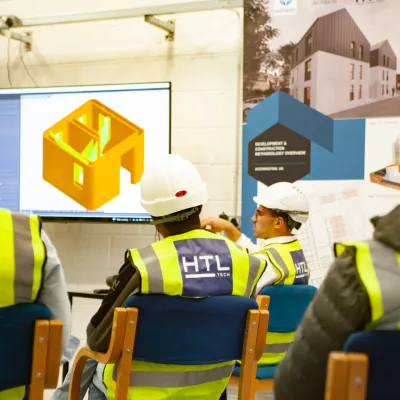
Jandré Oosthuizen, HTL.tech’s Director of Materials & 3DCP Operations, runs this training on behalf of AMTCE and emphasised that this 3D printer training, despite the apparent complexity of the technology, is simpler than it seems. He added that it only takes a few months for someone with a limited construction background to master the principles.
If you have been working in traditional construction, any knowledge and skills you have acquired will fit well into this new market. It’s mainly about reskilling yourself to adapt to the different demands and opportunities that come with this transition, enabling you to leverage your existing expertise in a different but related industry.
HTL.tech’s Director of Materials & 3DCP Operations
Future Cast (in partnership with Industry 4.0 Skillnet) is another education provider focused on this area, with an introductory one-day Introduction to 3D Construction Printing course run in a research and testing laboratory in Collooney, Co. Sligo.
Mark McGowan is the Future Cast programme trainer and has 10+ years’ expertise in additive manufacturing before 3D concrete printers became available in Ireland.
After I took an interest in 3D printing, I spent the next decade printing with every plastic polymer you could think of. In early 2021 I was lucky enough to work with HTL.tech and use their printer, which absolutely caught and held my interest.
Future Cast programme trainer
The course provides learners with the basics of 3D construction printing, including how to use the equipment, relevant processes, the science behind the materials, and opportunities for using this technology. The training is accessible to all ages and backgrounds, with “even a gamer with no construction experience” able to understand the core principles in no time. With between 150-190 people completing this course to date, this success is key to making 3D concrete printing a mainstream process.
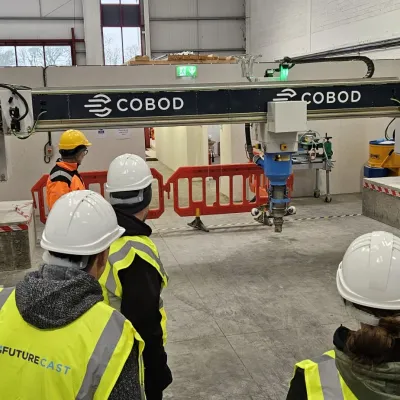
3D concrete printers are pretty much par with 3D printers for manufacturing now. Once the carbon footprint of the concrete material is lowered, construction companies will see this technology as a viable alternative, and it will take off.
Future Cast programme trainer
Institutions across the country, including at TU Dublin, UCD, UCC, and ATU, are engaged in researching, with HTL.tech, the structural testing of printed concrete, more sustainable material mixes, and the use of automation to demonstrate this potential.
3D printing of additive plastic elements for engineering applications, meanwhile, is nascent but growing in popularity. This is particularly true for uses in sub-assemblies for modular units, casting formworks, and creating small architectural features.
Training courses in 3D plastic printing are also on offer across the country. South-East Technological University offers a Bachelor of Science in Additive Manufacturing with applications in the construction sector. There are also shorter courses available for third-level students and industry professionals online and at its Waterford campus.
Established in 2021 by SETU and funded through the Human Capital Initiative, the Bachelor of Science in Additive Manufacturing addresses critical gaps in construction by delivering expertise in remote digital fabrication and advanced prototyping. To date, 39 students have enrolled in the course, with 27 successfully graduated. The programme benefits from more than 15 formal industry and research partners, and a cross-disciplinary academic team actively engaged in training delivery and mentoring.
A course highlight is a workshop hosted by HTL where learners can observe how additive manufacturing is revolutionising the construction sector and translate theory into real-world practice. The newly established SETU 3D Printing Lab has further expanded student access to rapid prototyping, with remote printing capabilities enabling fast iteration from design to testing. David Alarco, Project Manager at AMASE and Programme Coordinator, referenced what students can gain from this course.
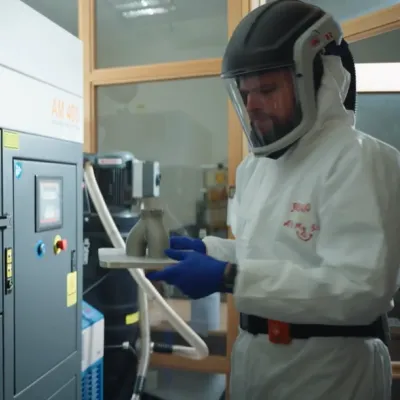
With a growing emphasis on sustainable construction and advanced design, SETU graduates are well-positioned to drive innovation in the built environment, delivering more efficient, lower-emission, and adaptive solutions across the construction industry.
Project Manager at AMASE and Programme Coordinator
Individuals, industry, and education aligned in the rise of 3D construction printing and its broad promotion of Modern Methods of Construction. Although the technology still must overcome a lack of building regulations and certification of print materials, all stakeholders are united to address the knowledge gap and promote the benefits of this type of building. With growing interest in localised, small-scale manufacturing firms able to deliver housing rapidly in a less carbon and resource-intensive way, the rise of 3D printing for the construction industry shows no sign of tapering off any time soon.
3D printing courses are available for a range of construction professionals, while 3D Printing Technician is fast becoming one of the most exciting roles in the MMC world. Learn more today!
